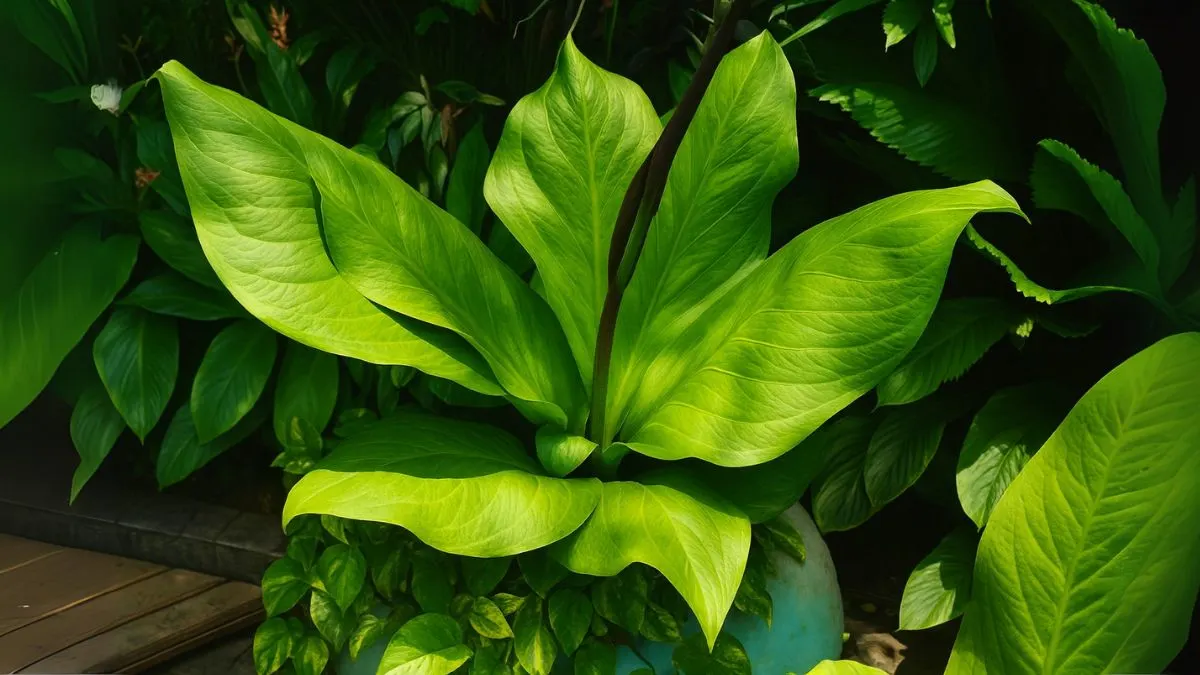The Anthurium Bird’s Nest (Anthurium hookeri) is unlike any other indoor plant you’ve seen. With its lush, leathery leaves that form a dense rosette, it resembles a tropical bird’s nest—hence the name. Popular in Canada, the USA, and all over the world, it has become a go-to for plant parents looking for something striking yet manageable.
Better still, it’s an easy-care houseplant that rewards you with tropical beauty if you understand its basic needs. In this article, we’ll cover everything from light and soil to humidity and potting, while weaving in a few lessons I’ve learned from growing my own Bird’s Nest Anthurium indoors.
Light: The Secret Ingredient for Growth

One of the most critical aspects of care is lighting.
- Always provide it with bright, indirect light and high humidity.
- These plants need bright but indirect sunlight as well as moist soil to thrive.
- While they do best in abundant sunlight, avoid direct harsh rays that can scorch the leaves.
From my experience, I placed my Anthurium hookeri near a large east-facing window with sheer curtains. The result? Healthy, vibrant leaves that maintained their rich green without burns or yellowing.
Soil and Potting: Choosing the Right Mix
The soil you choose will determine how well your plant grows. Anthuriums don’t like compact soil that traps water. Instead:
- Plant in a well-draining pot with a 50-50 mix of orchid and houseplant potting media.
- Or, use a well draining media that consists of coco-chips, pine bark, pumice and peat moss.
Here’s a simple breakdown:
Potting Option |
Benefits |
50-50 Orchid + Houseplant Mix |
Excellent drainage & aeration |
Coco-chips + Pine Bark + Pumice + Peat Moss |
Mimics tropical rainforest conditions |
When I first used regular potting soil, my Bird’s Nest Anthurium struggled with root rot. Switching to a chunky, well-draining mix saved the plant and boosted its growth.
Also Read: Why Aglaonema Evergreen Is the Perfect Indoor Plant for Beginners
Humidity & Temperature Needs
Anthurium hookeri is a tropical plant, and like most tropicals, it craves moisture in the air.
- Always provide it with bright, indirect light and high humidity.
- Keep humidity levels above 60% for lush, shiny leaves.
- Room temperatures of 65–85°F (18–29°C) work best.
In Canada’s dry winters, I use a humidifier near my Bird’s Nest Anthurium. In the USA, especially in southern states, natural humidity often does the job outdoors or in greenhouses.
Watering: Moist but Not Soggy
Watering is where many beginners trip up.
- Remember that these plants need bright but indirect sunlight as well as moist soil.
- Keep soil evenly moist, but never soggy.
- Water thoroughly, then allow the top layer to dry slightly before watering again.
Consistency is key. When I followed a strict schedule of watering every 5–7 days in summer and cutting back in winter, my plant’s leaves grew bigger and healthier.
Space: Let the Hookeri Spread
Unlike smaller Anthurium varieties, this one grows large over time. That’s why it’s important to plant the Hookeri in a spot with ample space to grow.
Indoors, give it room on the floor or a sturdy plant stand. Outdoors in warmer regions, it can spread beautifully in shaded garden corners. In my home, moving it from a tight corner to an open living room corner gave it freedom—and the plant thanked me with fresh new growth.
Why Bird’s Nest Anthurium Is Loved Globally
- In Canada, it’s a popular choice for indoor tropical corners during long winters.
- In the USA, it’s a staple in both homes and offices due to its low-maintenance appeal.
- Globally, it’s adored as one of the most easy to care for houseplants, with a dramatic presence.
What makes it universally attractive is its adaptability. Whether you’re a beginner or a seasoned plant collector, this Anthurium will make you feel successful.
Also Read: Peacock Plant: The Elegant Indoor Beauty With Foliage Like Feathers
Personal Experience: A Plant That Teaches Patience
When I brought home my first Bird’s Nest Anthurium, I underestimated its space needs and potting mix requirements. The leaves wilted often, and I thought I was losing it. After learning to use a well draining media that consists of coco-chips, pine bark, pumice and peat moss, and ensuring bright, indirect light, it bounced back.
Now, it’s the centerpiece of my indoor jungle, admired by every guest who walks into my living room.
Your Roadmap to Success
To keep your Anthurium Bird’s Nest thriving:
- Provide it with bright, indirect light and high humidity.
- Ensure these plants need bright but indirect sunlight as well as moist soil.
- Plant in a well-draining pot with a 50-50 mix of orchid and houseplant potting media.
- For best growth, use a well draining media that consists of coco-chips, pine bark, pumice and peat moss.
- Always plant the Hookeri in a spot with ample space to grow.
Follow these steps, and you’ll soon discover why this plant is treasured worldwide.
👉 Thinking of adding one to your collection? Start today—it’s an easy-care houseplant that rewards you with tropical beauty and endless admiration.






